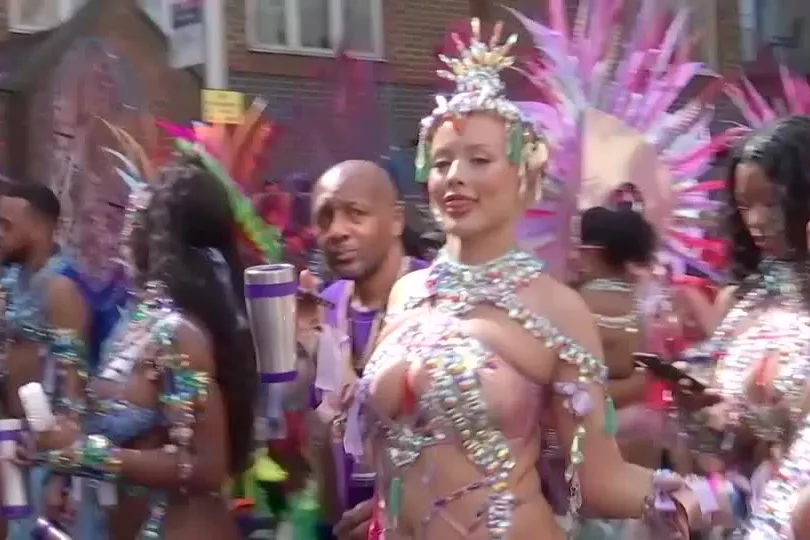In 1959, Trinidadian activist Claudia Jones organized a Caribbean carnival at St Pancras Town Hall in London, planting the seeds for what would eventually become the Notting Hill Carnival, one of the world’s largest street parties. This year, as revellers gathered on the second day of the carnival, the message of unity that Jones championed felt more important than ever, following recent racial tensions sparked by misinformation online.
The carnival, now in its 56th edition, draws over a million people to the streets of west London, celebrating the city’s diversity and the contributions of its Caribbean community. Matthew Phillip, the chief executive of the Notting Hill Carnival, emphasized that the event is Britain’s largest celebration of inclusion, focusing on commonalities rather than differences.
Jocelyn Kuyaziwma, a 28-year-old participant from Wales, expressed how the carnival represents the vision of what she hopes Britain could be— a place where people from all backgrounds come together in harmony. Kuyaziwma joined Mangrove Mas, one of the carnival’s oldest masquerade bands, to be part of the vibrant celebration.
The origins of the Notting Hill Carnival are deeply intertwined with the history of the Windrush generation, the hundreds of thousands of Caribbean migrants who came to Britain between 1948 and 1971 to help rebuild the country after World War II. Their arrival was met with racial tensions, culminating in the 1958 riots in the London district of Notting Hill, where many Caribbean migrants lived. The carnival was born out of this adversity, serving as a response to the racism of the time.
Today, the event is a colorful and joyous celebration of multiculturalism, highlighting how generations of migrants and their descendants have enriched British society. DJ Jhen-I, who performed at one of the carnival’s sound systems, noted that London remains one of the most diverse cities in the world, and the carnival is a testament to that diversity.
Participants like Ramzan Bacchus, who wore a Guyana bandana, emphasized the importance of celebrating culture and unity. “It does not matter where you come from; everyone is here to celebrate together as one people,” Bacchus said.
Despite the celebratory atmosphere, the event also saw a significant police presence, with 7,000 officers deployed. While the majority attended to celebrate, police reported incidents of violence, including stabbings and assaults on officers. Nevertheless, the spirit of the carnival remained strong, with colorful trucks, vibrant costumes, and flags from Caribbean nations filling the streets.
For many, like Jama Elmi, a Londoner originally from Somalia, the recent racial tensions haven’t diminished the carnival’s significance. “The carnival signifies togetherness, happiness, good food, and good culture,” Elmi said. “It’s all love.”
READ MORE:
